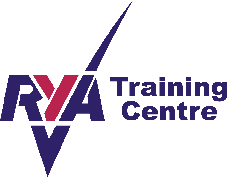Between 2011 and 2014 there were 50 fatal diving accidents in the UK, and almost all of them were preventable
This is the figure that stuck with me most after our trip to the RNLI. They are now running a campaign which is trying to prevent more diving accidents from occurring in UK waters, and we were lucky enough to be invited along to see the work they do for ourselves.
The charity was set up in 1824 by Sir William Hillary, with just a small group of sailors on the Isle of Man. It became a foundation that now has 238 lifeboat stations and raises £174 million each year. We started the day with a tour around the main college where all volunteers are trained. On the tour, we were taken to see the wave pool that is used for training. All different kinds of weather conditions can be simulated here, and boats can be used in the pool to practice capsizes, making the conditions as realistic as possible. We then had a go in the simulator. This is a room designed like one of the life boats, with screens instead of windows showing the sea. I was given the role of steering the boat first, and I soon learned I’m even worse at steering boats than cars! Different areas and weather conditions can be simulated, and the training crew have to respond to emergencies. Check out our Facebook page for a video!


The next part of the day was seeing inside RNLI HQ. Here, we saw all the different departments that help keep the RNLI running, such as media, video editing, and fundraising. We were shown the accident prevention campaign aimed at different activities around UK coast: hiking, kayaking and especially scuba diving. We also learned about the work being done abroad in third world countries, such a Bangladesh, where a person drowns every 2 seconds. Here, programs have been set up to warn people of the risks surrounding water, and how to handle any situations when they do occur.
The last part of our tour was to see the all-weather lifeboat station, including where lifeboats are built and serviced. This was built in 2015 as a way for the RNLI to be able to build their own boats withthe standard of technology they needed, as well as saving the organisation £3 million a year. 3 new lifeboats are made here each year, as well as 398 other lifeboats in the fleet being tested and serviced.


Overall I found the visit to the RNLI eye-opening, as it made me think about how taking the time to have a thorough buddy check, carrying the correct equipment and diving safely within PADI limits can allow me to prevent incidents that could potentially be fatal.







